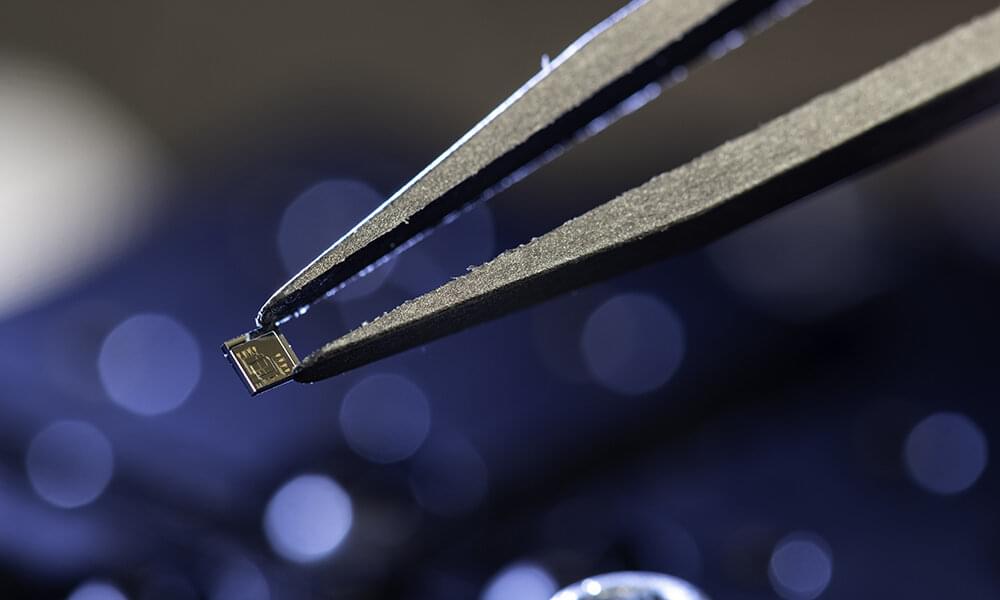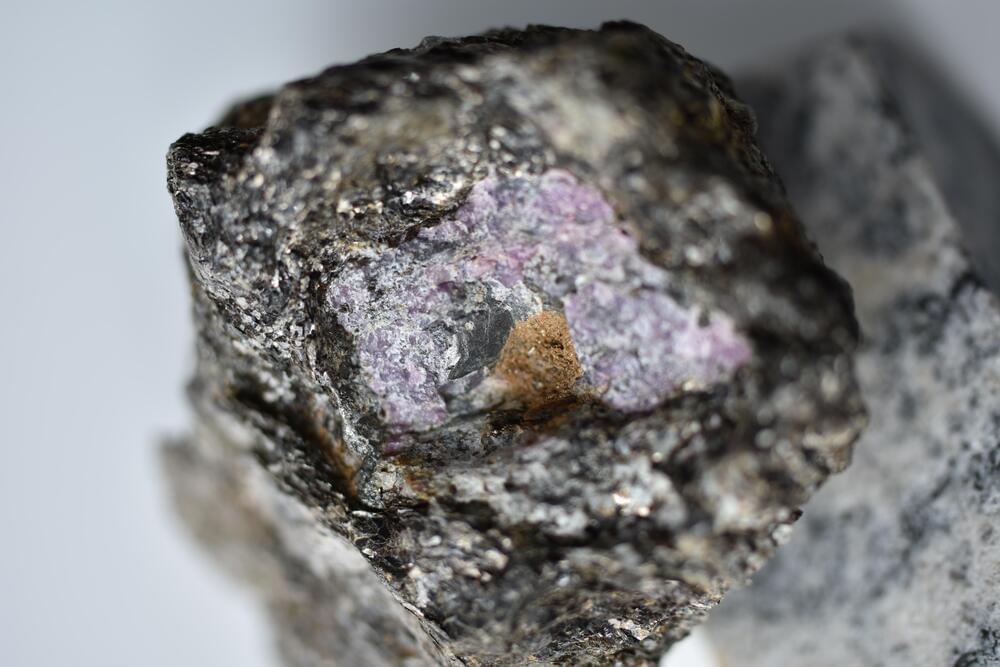The company has its hands in a lot of technology pies, from advanced robotics to autonomous cars, planes, chips, advanced AI, and even medical research. This week it offered a glimpse of an avatar-dominated collaboration metaverse.
Get the latest international news and world events from around the world.


Artificial Intelligence Predicts Eye Movements
Summary: A newly developed AI algorithm can directly predict eye position and movement during an MRI scan. The technology could provide new diagnostics for neurological disorders that manifest in changes in eye-movement patterns.
Source: Max Planck Institute.
A large amount of information constantly flows into our brain via the eyes. Scientists can measure the resulting brain activity using magnetic resonance imaging (MRI). The precise measurement of eye movements during an MRI scan can tell scientists a great deal about our thoughts, memories and current goals, but also about diseases of the brain.

Tiny chip provides a big boost in precision optics
“If you want to measure something with very high precision, you almost always use an optical interferometer, because light makes for a very precise ruler,” says Jaime Cardenas, assistant professor of optics at the University of Rochester.
Now, the Cardenas Lab has created a way to make these optical workhorses even more useful and sensitive. Meiting Song, a Ph.D. student, has for the first time packaged an experimental way of amplifying interferometric signals—without a corresponding increase in extraneous, unwanted input, or “noise”—on a 1 mm by 1 mm integrated photonic chip. The breakthrough, described in Nature Communications, is based on a theory of weak value amplification with waveguides that was developed by Andrew Jordan, a professor of physics at Rochester, and students in his lab.

SpaceX is beginning to get the hang of human spaceflight
Crew Dragon resulted from a partnership between NASA and SpaceX over the last decade. Anticipating the space shuttle’s retirement, NASA worked with SpaceX and Boeing to privately develop launch systems to carry astronauts into low Earth orbit. When the final contracts were signed in 2014, it was expected that SpaceX and Boeing would each fly one mission a year. Boeing, however, has run into technical challenges with the development of its Starliner spacecraft, so Crew Dragon has had to perform double duty from the start.
“I think we’re incredibly grateful with the partnership that we’ve had,” Kathy Lueders, chief of human spaceflight operations for NASA, said during a post-launch news conference of the NASA-SpaceX team. “You know, when I first started in commercial crew, six or seven years ago, it would have been a dream to me that we would have flown these four missions back to back. Because it’s a really tough thing to do. So I’m incredibly proud of this joint team.”
The cadence is even more impressive considering that SpaceX also recently debuted an upgraded version of its Cargo Dragon spacecraft. Including crew and cargo missions, SpaceX has either launched or landed a Dragon spacecraft every month in 2021 except for February and March.

Ruby that hides 2.5 billion-year-old signs of life is one precious gem
If you own any piece of jewelry with a ruby, you’re probably never going to look at it the same way again.
Forget those perfect gemstones you see glittering in store displays. What scientists are looking for are the flawed ones — the ones that contain inclusions which can whisper the secrets of Earth’s distant past, like that tardigrade trapped in amber. When researcher Chris Yakymchuk and his team unearthed a peculiar ruby in Greenland, the inclusion they found was what remained of life that was over 2.5 billion years old.
What was inside the ruby sounds common enough. Graphite is the same material pencils write with, but it is also a pure form of carbon that Yakymchuk determined to be all that was left of prehistoric microbes, possibly the same cyanobacteria (blue-green algae) that first released oxygen into Earth’s atmosphere through photosynthesis. He led a study recently published in Ore Geology Reviews.
Elon Musk’s Insane New Plan To Build A $20B Futuristic City
Elon Musk, SpaceX, Tesla and Future City (Starbase, Texas)
🔔 Subscribe now with all notifications on for more Elon Musk, SpaceX and Tesla videos!
We all know how great it is to own our own home, but how much better is it to own our city? #ElonMusk the CEO of #Tesla and #SpaceX said that he is developing a new metropolis in Texas named ’ #Starbase.’ It is not a secret that Musk is known for his grandiose initiatives. Further, Musk’s metropolis will be built around his aerospace company SpaceX’s rocket launch pad. Musk, who is currently the world’s richest person with a net worth of nearly $226.5 billion according to the Forbes real-time Billionaire’s list, has frequently used the microblogging website Twitter to share brief updates.
📺 Watch the entire video for more information!
About Elon Musk Rewind.
🎥 Videos about Elon Musk, SpaceX, Tesla and more.
🎨 Written, voiced and produced by Elon Musk Rewind.
🔔 Subscribe now for more Elon Musk, SpaceX and Tesla videos.
Watch More from Elon Musk Rewind.
POSTHUMANISM and NEUROTECHNOLOGY
Playlist of.
Share your videos with friends, family, and the world.
Every Prototype that Led to a Realistic Prosthetic Arm
Since the early 2000s, private companies, governments, and research labs have been developing prosthesis that are a lot more advanced than previous designs. WIRED talked with Easton LaChapelle, founder and CEO of Unlimited Tomorrow, to understand how he designed, tested, and adopted his prosthetic arm.
The movie GENERATION IMPACT: THE INVENTOR, follows 25-year old innovator Easton LaChappelle, who developed the world’s lightest weight and most affordable bionic limb. GENERATION IMPACT: THE INVENTOR, can be viewed on HP.com’s digital hub, the Garage (http://hp.com/generation-impact) and YouTube.
Still haven’t subscribed to WIRED on YouTube? ►► http://wrd.cm/15fP7B7
Listen to the Get WIRED podcast ►► https://link.chtbl.com/wired-ytc-desc.
Want more WIRED? Get the magazine ►► https://subscribe.wired.com/subscribe/splits/wired/WIR_YouTu…ription_ZZ
Follow WIRED:
Instagram ►►https://instagram.com/wired.
Twitter ►►http://www.twitter.com/wired.
Facebook ►►https://www.facebook.com/wired.
Get more incredible stories on science and tech with our daily newsletter: https://wrd.cm/DailyYT
Metformin Impairs Exercise Training-Related Improvements In Older Adults
Join us on Patreon!
https://www.patreon.com/MichaelLustgartenPhD
Papers referenced in the video:
Metformin induces muscle atrophy by transcriptional regulation of myostatin via HDAC6 and FoxO3a.
https://pubmed.ncbi.nlm.nih.gov/34725961/
Metformin blunts muscle hypertrophy in response to progressive resistance exercise training in older adults: A randomized, double-blind, placebo-controlled, multicenter trial: The MASTERS trial.
https://pubmed.ncbi.nlm.nih.gov/31557380/
Metformin inhibits mitochondrial adaptations to aerobic exercise training in older adults.
https://pubmed.ncbi.nlm.nih.gov/30548390/